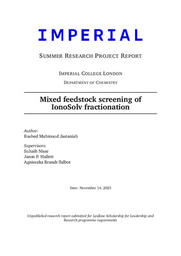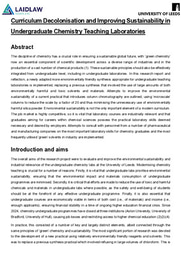Investigating the Role of Alpha-Synuclein Charge in Synaptic Vesicle Fusion and Neurotransmitter Release Using Mass Spectrometry

This research focuses on investigating how the charge properties of alpha-synuclein influence synaptic vesicle fusion and neurotransmitter release, which are critical processes for efficient neural communication. Alpha-synuclein is a small presynaptic protein implicated in Parkinson’s disease and other neurodegenerative disorders, yet its precise physiological role remains unclear.
Using native mass spectrometry (nMS) and ion mobility mass spectrometry (IM-MS), this research explores how changes in the protein’s electrostatic charge state affect its interaction with lipid vesicles, which simulate synaptic vesicles. The goal is to better understand whether alpha-synuclein promotes or inhibits membrane fusion depending on its charge state and whether this could contribute to either healthy synaptic function or pathological aggregation.
Through collaboration with experienced researchers and hands-on lab work, this study aims to provide insights into the biophysical mechanisms of synaptic regulation, which may inform future research into therapeutic strategies for neurological diseases.





Please sign in
If you are a registered user on Laidlaw Scholars Network, please sign in